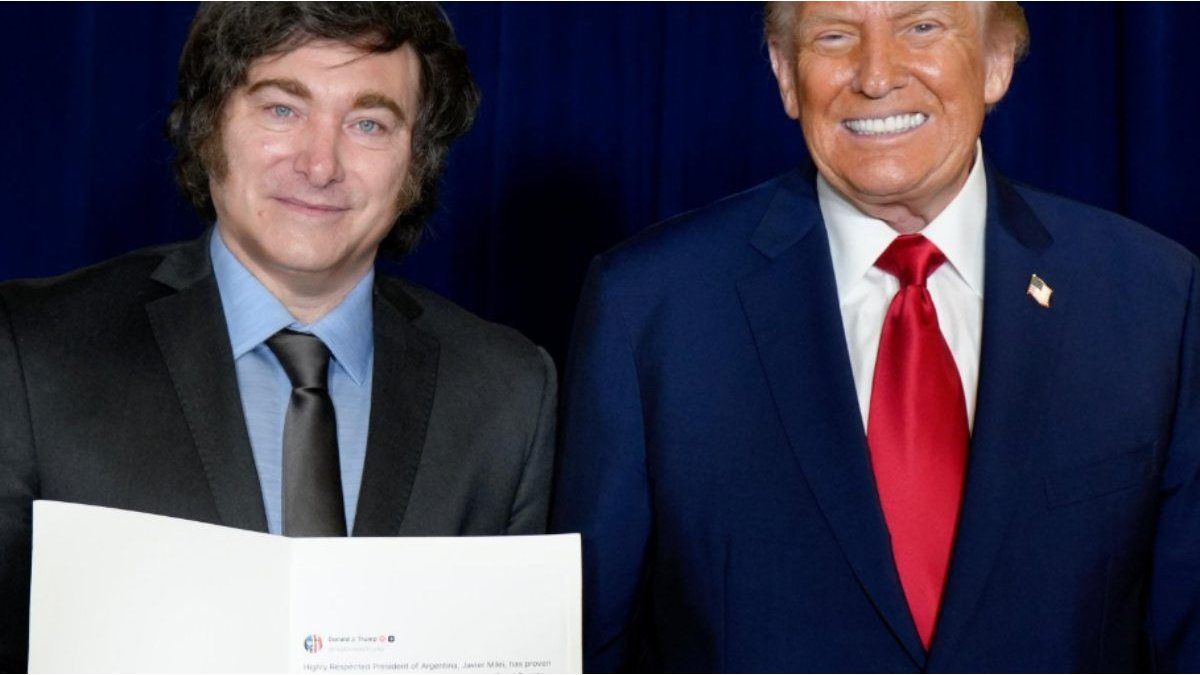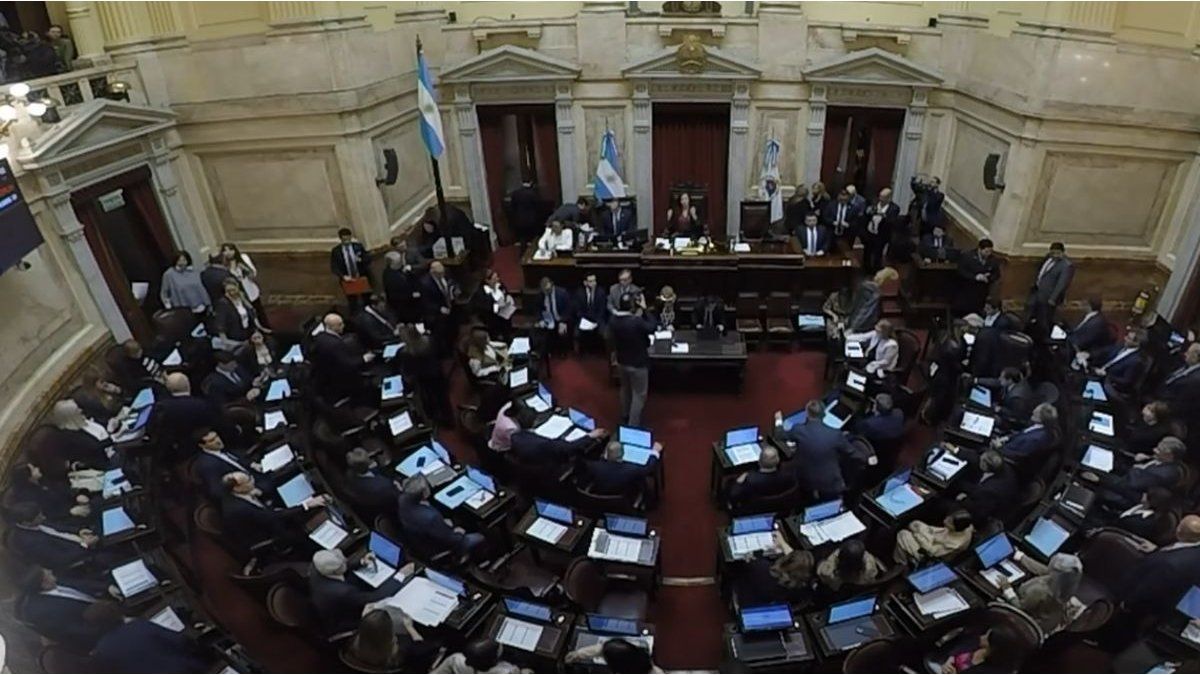From the watercolors he painted when he was 12 years old to his best-known paintings, such as “El Payador” or “El Trick”, which marked the imprint of a unique work of the plain, its customs and its people, the Kirchner Cultural Center (CCK ) exhibits until the end of October the exhibition “Florencio Molina Campos. Paintings for the people” and recovers the legacy of the artist who was inspired by the Buenos Aires pampas to build a visual and popular language about the Argentine countryside.
Two gauchos in a photography studio look seriously at the camera, posing against an artificial plain background with a very white sky. The staging, which a photographer seems to have built in detail and in series like the rest of the images that hang in the studio, is completed by a column that acts as a flowerpot and has a vase on top. Is that the field? The painting is called “Pa’l portrait” (1945) and Molina Campos seems to have painted it as a satire of the representation of the gaucho, of the plain, that universe that he chose for his works and to which he gave his own aesthetic in the field of visual arts and graphics, far from the claim of literal representation that photography assumed in the last century.
Curated by Federico Ruvituso, director of the Emilio Pettoruti Provincial Museum of Fine Arts, and Viviana Mallol, director of the Enrique Udaondo Provincial Museum Complex, the CCK reveals about forty works on the fifth floor of the former Post Office Palace -Sarmiento 15 in CABA. by the artist born in 1891 as Florencio de los Ángeles Molina Campos in which there are landscapes and countrymen, chinas, ombúes, horses, plains, grocery stores, parties, payadas and ranchitos.
Also on display are two works that go beyond the rural register and are those he painted during his time in the United States, but – despite the cultural and geographical difference – they insist on that humorous, playful and testimonial palette, such as one in which three African Americans, dressed to the nines, gather around the piano.
The paintings belong to the Molina Campos Foundation, the guardian of more than 120 works by the artist, a thousand objects and some 600 letters. The same one that in 2020 was intervened by Justice due to the claim of relatives and the municipality of Moreno for irregularities. The intervention led to an investigation and the recovery of the works in coordination with the Cultural Institute of the Province of Buenos Aires, which convened the provincial museum and the Udaondo to inventory, study and revalue this collection. As part of this process, this year two exhibitions were already held in Moreno and La Plata.
In a tour with Télam, Federico Ruvituso says that the exhibition at the CCK is “a small sample of what is beginning to be recovered, because although Molina Campos is very popular and well known, he is one of the least studied artists in terms of history of art. He is one of the most copied, falsified and sought-after artists, but an in-depth study of his collection, his life, his letters and paintings was not carried out despite having a series of very interesting elements from his history.”
Why were you excluded from academic study in the field of art? “For many reasons,” answers the director of the Pettoruti. “When something is very popular, the elites of the fine arts usually reject it or criticize it quite categorically.” The technique and humor that characterize his works were some of those criticisms that the canon pointed out as his flaw, as if his paintings were a “kind of mocking satire of the countryside.” The curious thing is that “the country people loved Molina Campos,” says Ruvituso. A construction closer to a critical conclusion than to an offense perceived by rural people.
Ruvituso identifies another element of the omission and it is the proximity to “graphic humor, the press, almanacs, with a lot of things that fall into what is called visual culture but are not fine arts.” Among Molina Campos’s greatest hits, the most remembered of him are the almanacs that he made for the Alpargatas brand for years and years.
The temporal arc that the exhibition covers includes the childhood watercolors that show a very young Molina Campos painting riders, horses and cows, until the momentum that his work takes at the end of the twenties when he returns to exhibit in an exhibition in La Rural and harvest a recognition that will extend throughout his life, as the curator describes: “He has tremendous success with the vision of the countryside, of the horses, of the characteristics of the countrymen.”
To the point that “the president of that time sees him, gives him a position as a drawing teacher at the Nicolás Avellaneda school and he becomes a very popular figure in the country and the world, especially in the United States. He signs with the brands Alpargatas and begins to make an almanac per year, travels to the United States and signs with a tractor company and also makes almanacs. That is to say, it builds an Argentine figure that is also an export product,” Ruvituso reviews.
Although the works of Molina Campos were associated with the representation of the gaucho with bulging eyes, his works have other significant details that give him his own aesthetic and poetics in relation to the representation of the gaucho and the countryside. “All the gauchos are impeccable, if there is a tear in a pair of pants it is mended, if there is a broken plate it is propped up, that is to say there is a very noble vision of that humble, simple country life, never that vision of the gaucho as an outcast “They are men of work, of partying, of playing, with a lot of humor.”
The researcher also highlights the horizon in the paintings: a general panning of the works hanging in the room allows the viewer to imagine a kind of line that runs through all the works, with a large blue sky, some clouds, and a horizon very close to the ground. that is repeated in different paintings. “They criticized him for drawing the horizon too low but if you go to the pampas you see that: the floor is low and the sky is that enormous thing that you see. He represented the views in that way and he monumentalized the characters, he turned them into anonymous heroes and everyday,” he says.
Many of the works that can be seen in room 504 of the CCK propose stories like small stories of rural scenes. The rest of the horses and the countrymen under the shade provided by a tree in the immensity of the plain, the dance of a zamba, that of a pericón; the trick game, the cockfight, the ring race, the boss who rides, the rider on his horse combining a masterful force for movement, the Chinese woman who mates her partner before he leaves for the field , the grandfather who tells stories around the fire.
There is also the last work he painted at the time of his death, in 1959, found on his lectern. It is “El boliche del ombú” and it is the largest painting of all, where you can see in perspective a ranch, a leafy ombú, the countrymen below, the horses that are fed, in the background the men working among the grasslands of the countryside .
The countryside of these paintings represents, for the most part, the Buenos Aires Pampas plain but also has some mountain ranges that refer to other territories such as northern Argentina. Many of the flat landscapes that Molina Campos painted come from Moreno, where the artist had his summer home. There was in that pictorial gesture an attempt to capture an essence, a time, as if he wanted to bear witness to something of “that world that was becoming extinct and was becoming a kind of mythology with the advance of the city,” says Ruvituso.
Molina Campos himself once said, as quoted by the Ministry of Culture, that he painted to eternalize a legend: “I paint the gaucho, the one I have seen in distant years, when true gauchos still existed, because I know them and understand them. Inside little, fanned by progress and cosmopolitanism, it will be too late to copy them from nature. (…) I simply want to capture and perpetuate in my work everything that is interesting and picturesque in that gauchaje that will soon be just a memory, a legend.” .
Source: Ambito
I am an author and journalist who has worked in the entertainment industry for over a decade. I currently work as a news editor at a major news website, and my focus is on covering the latest trends in entertainment. I also write occasional pieces for other outlets, and have authored two books about the entertainment industry.




